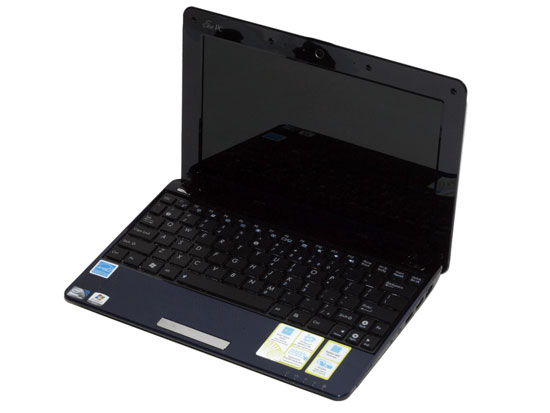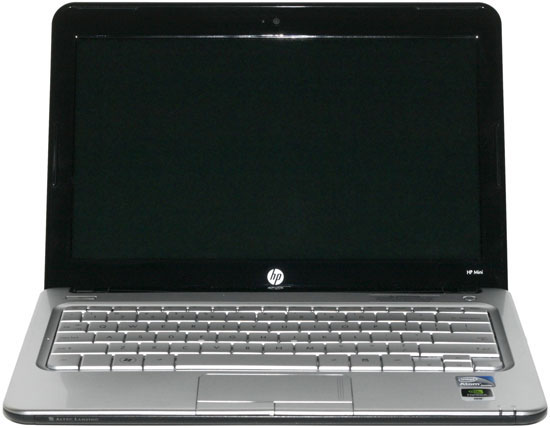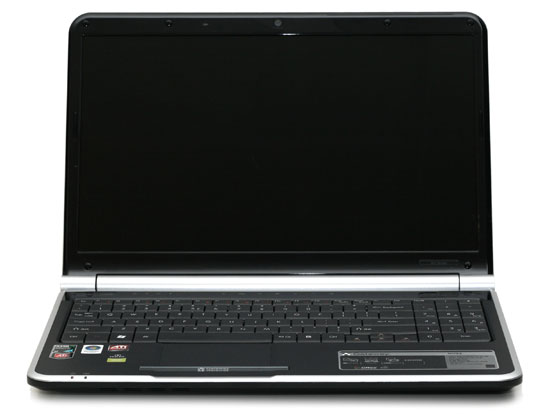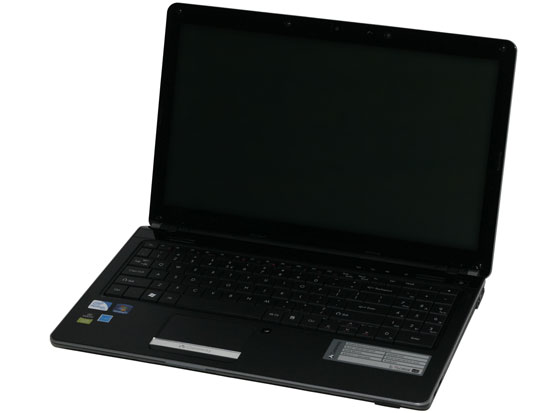Intel Core 2 CULV Roundup: Who Needs Atom?
by Jarred Walton on February 4, 2010 4:00 AM ESTMarket Recap (aka Conclusion Part 1)
We asked at the outset, "Who needs Atom?" It's now time to answer that based on our review today. What we really need to look at are the strengths and weaknesses of the various platforms at the various price categories. We've been over this ground before, but it bears repeating. We'll focus specifically on the entry level laptops and netbooks, with a price ceiling of around $800. Given those parameters, here's how things work out.

Sub-$350 is clearly the domain of the Atom-based netbooks, so it's definitely not dead. You'll sacrifice a lot in terms of performance, and features are also going to get cut. HD video decoding support generally isn't present, but we may see some netbooks start to ship with Broadcom Crystal HD to handle that. Intel also has their GMA 500 IGP that handles H.264 decoding quite well, but there were a lot of other issues with the drivers that made it a less than perfect solution. At present, look for Atom N450 netbooks for around $300 (give or take), and you can expect great battery life and very small form factors. So yes, Atom does have its uses.
$350-$500 is where things start to get messy. Atom netbooks obviously fall into this price range as well, but Microsoft won't let manufacturers ship Windows XP with more than 1GB RAM or a 160GB HDD. That's fine, but now you can get Windows 7 Starter (or even Home Premium in some cases) netbooks with 2GB RAM and larger HDDs. Battery life for such netbooks remains stellar, but the video decoding support is still lacking, barring a separate video decoder chip.

Another option that we encounter in this price range is NVIDIA's ION platform. ION works with the older Atom N270/N280, and battery life isn't as good as the Intel solution. The benefit is that you get full HD video decoding support - including the ability to play Blu-ray movies, assuming you have an external Blu-ray drive. Gaming is theoretically possible, but many games require more CPU power than Atom can deliver. Depending on the netbook features, ION looks to cut battery life by around 25% relative to non-ION N280 netbooks. So you can get better video support and around four hours of HD video playback and six hours of Internet surfing, or you can stick with vanilla Atom and get six hours of 720p (or lower) video playback, no Flash HD support, and up to ten hours of Internet surfing.
Need some more options? There are plenty of choices! CULV makes an entrance at just over $400, with battery life that's a bit better than ION netbooks. You also get 2GB RAM compared to most netbooks that ship with 1GB, and the GS45 chipset is much better than 945GSE so HD video content isn't a problem for the most part. (We're still waiting on full Flash 10.1 video support from Intel's IGPs, though.) Video playback can run for about 4.5 to 5 hours, and Internet battery life can reach seven hours.

If you prefer more performance and don't care as much about battery life, AMD laptops also make an appearance in this price bracket. You can find HP/Compaq and Acer/Gateway laptops with Athlon II M300/M320, 3GB/4GB RAM, and HD 4200 graphics for just under $500. These will typically be 15.6" notebooks rather than smaller form factors, and the size combined with the component choices will deliver battery life of around 2 hours for video, 2.5 hours Internet, or up to 3.5 hours in lighter loads. If you want to drop back to the older Athlon X2 CPUs and HD 3200 graphics, you can even get such laptops for around $400 (i.e. the Gateway NV52 line). We'd recommend against any of the single-core CPU solutions (AMD or Intel), as the lowered performance isn't backed by significantly improved battery life - CULV will do better in our opinion. Still, if you're okay with the compromise, you can find AMD Neo laptops as small as 11.6" with the MV-40 CPU. (Look at the MSI X610 results to see what sort of performance you'll get.)
Need even more choices? Well, they're there. Standard Intel-based (i.e. non-CULV) laptops are also available for just under $500 now, with CPUs like the Pentium T4300. The Gateway NV58 is representative of this class of laptop. Battery life is going to be around 2.5 hours for video, three hours for Internet, and up to 4.5 hours in light workloads. Basically, you'll get about 25% more battery life and 25% more CPU performance than the competing AMD solutions, but gaming isn't at all practical. (It's at least borderline on many games with the HD 3200/4200, with plenty of slightly older titles that run fine.)

At $500-$650 CULV really starts to show up a lot. Now instead of 2GB RAM, you get 4GB and generally larger hard drives. The Pentium SU4100 solutions are typically the best bang for the buck, with Core 2 Duo SU7300 usually adding $75 and only a small (5% or less) performance increase. SU7300 does add VT-x support, though, if you feel that's important. For battery life without compromising too much on performance, we feel CULV is an excellent choice. Laptops like the models we reviewed today would work great for college students, allowing you the freedom to work on papers and take notes all day at campus without the need to use an AC adapter. You can do the same with Atom, but these are faster and generally more capable. You still have to give up gaming performance, though - you'll need a discrete GPU with CULV if that's what you're after.
If you don't care about battery life and you want gaming performance, you can also turn to regular AMD and Intel laptops with GPUs like the Mobility Radeon HD 4330 or GeForce G210M (or 8200M/9300M). Another option is the new Core i3 laptops, with prices starting at around $600 for the i3-330M complete with 4GB DDR3, 320GB HDD, and the improved Intel HD Graphics. And from here the options begin to open up rapidly. As we've discussed already, the only thing you really need for CULV to handle games is a more capable GPU, and the ASUS UL line provides that as well as switchable graphics, giving you the best of both worlds. The smaller models cost a bit more, but the UL50Vt is currently selling for as little as $700. Don't like NVIDIA's GeForce line but still want CULV? Try the Lenovo U450P 33892GU for $800 (but we'd stick with the ASUS UL50Vt or UL80Vt).










62 Comments
View All Comments
tno - Friday, February 5, 2010 - link
Jarred,Again, I am not writing to instill any ill will. But technical content is only half of the product. Grammar and style are not mutually exclusive, and the proof of this is the use of style guides like the MLA, or Strunk and White, or even that of fellow online publication Engadget. These guides do more than just tell you where to use a comma; they seek to elevate and standardize the quality of writing for a publication.
Now I am all for introducing personal style to an article. And I am always impressed with the technical fidelity and content of AT writing. AT articles are more than just spec sheets and test results; they are pieces of writing. Arguing that omission of the preposition connecting two nouns is a matter of style is ignoring proper grammar with no gain. It is inexcusable for the writing component of any AT articles to be neglected, even if the technical content is of a high caliber.
Again, I am not trying to cause you any grief, nor imply that your writing is insufficient for inclusion on AT. I am simply pointing out that a small amount of editing and proofreading could go along way to improve all of AT's coverage.
I believe that this discussion has probably moved beyond the scope of the comments section and invite you to look-up my email through the forums if you would like to continue discussing this.
tno
JarredWalton - Friday, February 5, 2010 - link
Sadly (I suppose) I'm usually the one doing editing of other articles. It's much more difficult to edit your own content, especially after you've been over it ten times in the process of writing.But seriously, I find it astonishing that out of all the articles written on AnandTech and all the mistakes present in said articles, you would choose to complain about something so innocuous as "A couple years back" vs. "A couple of years back". We could also rephrase it "Just over two years ago" and it would be correct. I suppose http://www.thefreedictionary.com/couple">I'm in the minority when dropping the "of", though again I prefer to stick with informal styles for the most part.
At least we're not having a discussion about my use of "everything but" vs. "everything except"... or was that you as well? LOL
aapocketz - Thursday, February 4, 2010 - link
Back when the macbook Air came out these CULV processor laptops were $2000+, now they have dropped in price and could cannibalize high end netbooks. They are even being confused with netbooks now; consider the new Alienware m11x keeps being called a netbook, even though it uses a CULV.I have had similar thoughts, and almost purchased a Thinkpad x301 recently for under $800. The only reason I held back was I know these CULV chips are a couple years old now, and there are new I5 and I7 chips coming out soon, forcing prices down even further. When the Core2 CULV ultralights are sub $500, why buy these (bloated) netbooks for similar price? Netbooks originally were supposed to be around $200 or less though.
Also these ultralights have a few more little perks than the netbooks have, like backlit keys (or a "thinklight") - there is not a single netbook with a backlit keyboard.
Shadowmaster625 - Thursday, February 4, 2010 - link
Why dont you compare the $400 CULV notebooks with the netbooks, since that is the direct competition? Also there should be a Sempron M100 in here somewhere.macs - Thursday, February 4, 2010 - link
What about arrandale ULV? Asus UL30JT is coming soon and he brings core I7-620 ULV and NVIDIA 310M GPU. Should be great!I want something better than my atom netbook, maybe with a 11.6" screen but I want to wait those new Nehalem ULV...
Visual - Thursday, February 4, 2010 - link
I would love to see also the Acer 1420P / 1820P variants - no need to explore their tablet functionality in this comparison as it is off-topic, but do compare their keyboards, build quality and especially screen quality to the other non-touchscreen options. I've always wondered if touchscreen panels have a noticeably different visual quality.Also, if I understand correctly all these "current" CULVs are old Core 2/Penryn based, and as such are already old tech despite being launched in the products that you view only very recently. Shouldn't they get replaced with new Nehalem-generation 32nm processors any time soon? Or am I misunderstanding something?
Intel's code names and roadmaps are making my head hurt right now, so I'd really like to know your say on the matter - is there something in the same segment that is worth waiting for on the horizon?
QuietOC - Thursday, February 4, 2010 - link
The CULVs are all "old" 45nm Penyrn-3M/Wolfdale-3M 82 mm² dies--same core as the desktop E3x0 Celerons, E5x0/E6x0 Pentium Dual Cores, and E7x0 Core 2 Duos. The significant difference is that the CULV SpeedStep goes down to a 4x CPU multiplier during idle, my desktop Wolfdale-3Ms only go down to 6x. The Atom N270 also only goes down to a 6x multiplier.JarredWalton - Thursday, February 4, 2010 - link
Arrandale ULV parts have been announced, but nothing has shipped yet. I'm hoping to get one some time in the next month or two. One thing with the Arrandale ULVs is that they have a TDP of 18W compared to 10W. Obviously part of that is the integration of the new IGP, but there's definitely a question of how low their idle power draw can go. I suspect the initial Arrandale ULV parts will use slightly more power than the current Penryn parts.Performance is the other question we'll need to answer. Price wise, the newer Arrandale ULV chips run at a stock speed that's slightly lower than SU4100/SU7300 (1.06GHz and 1.20GHz for the http://www.anandtech.com/mobile/showdoc.aspx?i=370...">latest chips), and they also cost quite a bit more than SU4100. But yes, I am very interested to get some new ULV parts for review.
GTaudiophile - Thursday, February 4, 2010 - link
Anand,Out of curiosity, why not compare with the AMD Turion / Neo / X2 processors by chance?
OMG Snarf - Thursday, February 4, 2010 - link
I've got to agree with this. For the price point of the systems being benched, you can pick up an Athlon Neo X2 for $500, or a Turion Neo X2 for $600, direct from Toshiba with no shipping. Obviously the battery life won't be as good compared to the Intel CULVs, but I would be curious to see how the 12cell stacks up too. With the added $150 cost of the battery, you hit the same costs as the Intel CULV systems ($650), but get a Radeon 3200 instead of the anemic Intel 4500.